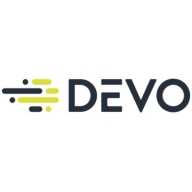

Splunk Enterprise Security and Devo both operate in the SIEM category. Splunk seems to have the upper hand in terms of feature depth and adaptability, while Devo is noted for its speed and cost-effectiveness.
Features:Splunk Enterprise Security offers powerful log mining capabilities, customizable dashboards, and seamless third-party tool integrations. Its advanced analytics help in preventing and responding to security threats efficiently. Devo is known for its fast real-time analytics, user-friendly interface, and customizable dashboards. Its ability to handle large data volumes efficiently is a standout feature.
Room for Improvement:Splunk users desire lower costs, easier setup, and better automation. Additionally, enhancements in analytics and simpler licensing are requested. Devo could improve by expanding its third-party system integrations, refining its UI, and offering more robust native parsers.
Ease of Deployment and Customer Service:Splunk operates across public, private, and hybrid clouds, requiring significant setup expertise for larger deployments. Its technical support is generally responsive, albeit with occasional delays. Devo, also available in cloud environments, boasts a straightforward setup and quick support response times, with a focus on user-friendliness post-deployment.
Pricing and ROI:Splunk, perceived as premium, offers extensive features but at a high cost, making it challenging for smaller entities despite its strong ROI in security threat responses. Devo provides a more budget-friendly alternative with fixed costs based on data ingestion, making it appealing to businesses seeking scalable solutions.
| Product | Market Share (%) |
|---|---|
| Splunk Enterprise Security | 9.2% |
| Devo | 1.1% |
| Other | 89.7% |


| Company Size | Count |
|---|---|
| Small Business | 7 |
| Midsize Enterprise | 4 |
| Large Enterprise | 11 |
| Company Size | Count |
|---|---|
| Small Business | 109 |
| Midsize Enterprise | 49 |
| Large Enterprise | 257 |
Devo is the only cloud-native logging and security analytics platform that releases the full potential of all your data to empower bold, confident action when it matters most. Only the Devo platform delivers the powerful combination of real-time visibility, high-performance analytics, scalability, multitenancy, and low TCO crucial for monitoring and securing business operations as enterprises accelerate their shift to the cloud.
Splunk Enterprise Security delivers powerful log management, rapid searches, and intuitive dashboards, enhancing real-time analytics and security measures. Its advanced machine learning and wide system compatibility streamline threat detection and incident response across diverse IT environments.
Splunk Enterprise Security stands out in security operations with robust features like comprehensive threat intelligence and seamless data integration. Its real-time analytics and customizable queries enable proactive threat analysis and efficient incident response. Integration with multiple third-party feeds allows detailed threat correlation and streamlined data visualization. Users find the intuitive UI and broad compatibility support efficient threat detection while reducing false positives. Despite its strengths, areas such as visualization capabilities and integration processes with cloud environments need enhancement. Users face a high learning curve, and improvements in automation, AI, documentation, and training are desired to maximize its potential.
What Are the Key Features of Splunk Enterprise Security?In specific industries like finance and healthcare, Splunk Enterprise Security is instrumental for log aggregation, SIEM functionalities, and compliance monitoring. Companies leverage its capabilities for proactive threat analysis and response, ensuring comprehensive security monitoring and integration with various tools for heightened operational intelligence.
We monitor all Security Information and Event Management (SIEM) reviews to prevent fraudulent reviews and keep review quality high. We do not post reviews by company employees or direct competitors. We validate each review for authenticity via cross-reference with LinkedIn, and personal follow-up with the reviewer when necessary.